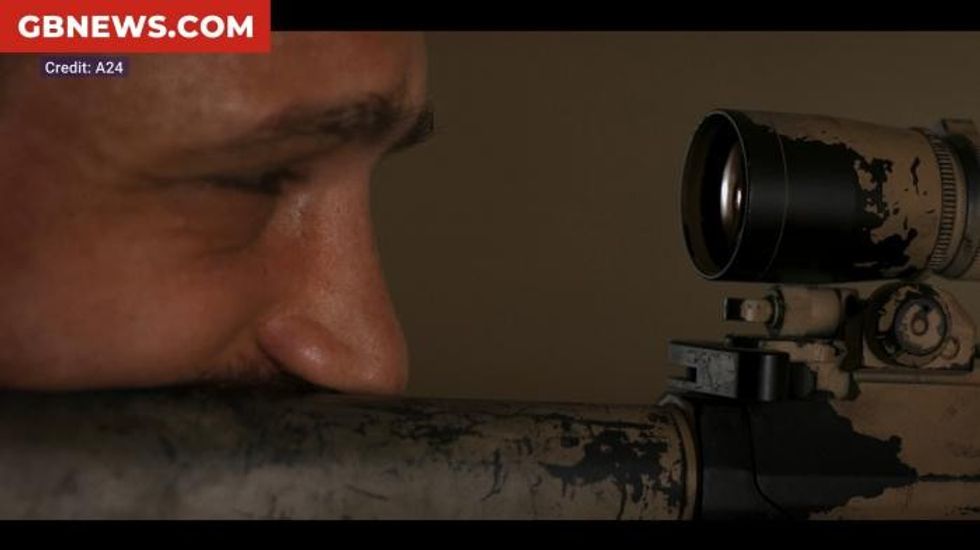Most people have a preconceived idea of a war film in their heads. Warfare does not meet that preconception.
Alex Garland and Ray Mendoza, who serve as co-directors and co-writers on the project, limit the traditional “warfare” tropes to the film’s title and nothing beyond.
The film compels the viewer to take what they will from it, as it presents a stunningly realised and visceral recreation of a veteran’s experience.
Warfare is not a traditional cinematic narrative; it is a raw recount of Mendoza, a former US Navy SEAL.
What we see is constructed out of the co-director/writer and his comrades’ unfiltered recollections of the day, leaving no room for glory or self-aggrandisement.
The film follows a small group of the often-mythologised special forces unit on a reconnaissance mission in Ramadi, Iraq, in 2006.
Taking over a house in the city, displacing a panicked Iraqi family, the SEALs soon find themselves surrounded and under attack from insurgents.
A disastrous attempt to evacuate leaves members of the team gravely injured, forcing the shell-shocked young men to collect themselves, care for the wounded, and hold out for rescue.
Warfare presents a powerfully straight and immersive take on the genre, trapping you for its full runtime right among the soldiers.
The film does not follow traditional cinematic beats or wrap itself up cleanly; events happen when they happen, meaning the viewer is not moored in the traditional rise and falls of dramatic structure.
We are with the men for those 90 minutes, which exposes the banality, the horror, and the confusion of conflict without ever sliding into gratuity.
Beyond this brave documentary-like commitment to accuracy, the film’s powerful but never overstated depiction of the brotherhood between the young men is its great success.
Beginning with a brief but brilliantly hypnotic intro, the connection between them is communicated more intimately than any cliché “what’s waiting for you back home?” dialogue could provide.
To that end, Warfare is led by a star-studded ensemble cast of young stars who all more than rise to the challenge.
Canadian newcomer D’Pharaoh Woon-A-Tai takes on the role of Mendoza himself, the unit’s communications specialist.
Shogun’s breakout star Cosmo Jarvis plays Elliot Miller, the sniper for whom the film is dedicated.
Will Poulter plays the unit’s commander, whose subtle switch from stoic leadership to deeply shaken inaction impresses.
Kit Conner and Joseph Quinn also make an impact, with Quinn’s subtle but intense glances at his fellows being particularly noteworthy.
However, it is the intention of the filmmakers that not one performance overshadows the key objectives of the film.
At the premiere in London, Garland described himself, the actors, and the film crew as “technicians assisting and getting out of the way of a veteran telling his story in as honest a manner as possible.”
Connor agreed, adding: “The main thing that rings true is the idea of a brotherhood and unity. The characters are slightly differentiated, but it’s not really about their characters. It’s not about where they’ve been, or where they’re going to go.”
This by no means writes off the artistry of the piece, which blends the cast as a unit – allowing the most raw human experience, as seen by each individual, to be channelled to the viewer in one seamless transmission.
On a technical level, Warfare is a masterclass. Garland and Mendoza have clearly built upon their first collaboration in 2024’s Civil War.
The sound design is impeccable, with deep thuds of gunfire, screams of the men, and constant radio chatter drowning the viewer in noise
Sound plays its most important role as we, like the men, are left dazed and deafened by an explosion – a linchpin scene of the movie. It comes together with strikingly abstract visuals to depict the total confusion and growing panic of the aftermath.
As a character finally regains their bearings, the sound and visuals violently cut back to their normal register in a distressing hammer blow to the senses.
Warfare’s conclusion is an abrupt one, closing immediately at the operation’s end.
We are simply with the men until we are not for those vital 90 minutes, and it is made all the more impactful because of that.
The lack of cinematic conventions in Warfare’s narrative and final moments leaves a stark impression as the credits show, often blurred, images of the real men involved next to their film counterparts.
It’s a stunning new addition to war film canon. It is also a refreshingly real picture of conflict, visceral but never gratuitous, and an understated example of brotherhood and masculinity.
